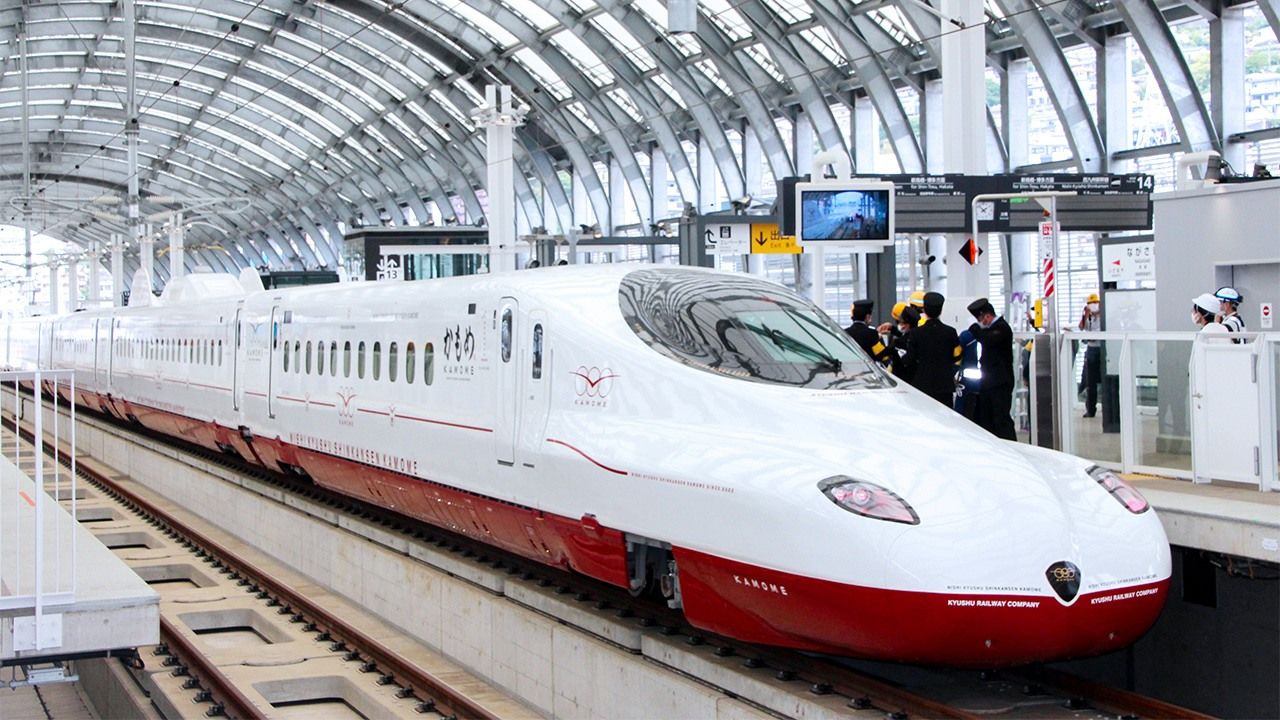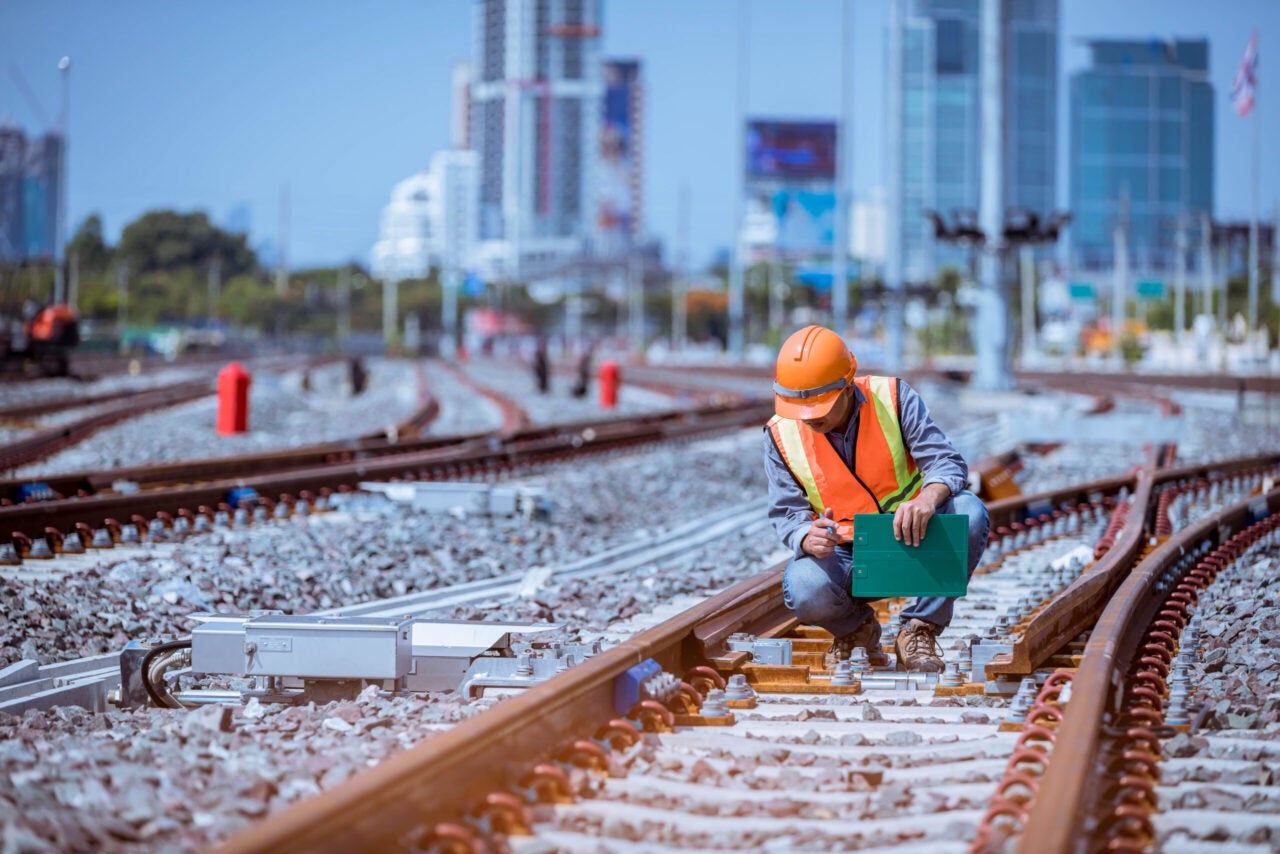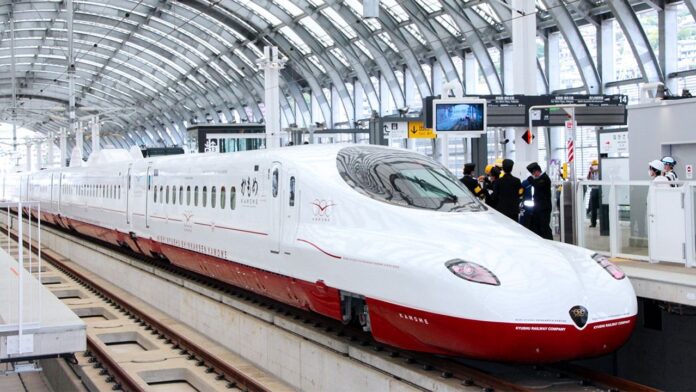When Railway Technology Becomes the Economic Engine
In Japan, the Shinkansen is not just a source of national pride, but also the backbone of a high-tech railway industry worth over $74 billion annually (according to the Ministry of Land, Infrastructure, Transport and Tourism, 2023). The development of a high-speed rail network of nearly 3,100 km (3rd longest in the world) in Japan has spurred the growth of dozens of industries: new materials, mechanical manufacturing of locomotives and carriages, electronic control systems, safety engineering, signaling systems, and more.
Hitachi Group – the manufacturer of Shinkansen locomotives – has expanded its production globally thanks to the technology developed from its domestic high-speed rail network. Japan also exports high-end technology, such as electromagnetic braking systems, lightweight composite materials, and energy-efficient electric motors.

The development of Japan’s high-speed rail network has spurred the growth of dozens of industries.
In South Korea, the KTX system, introduced in 2004, helped the country successfully establish a domestic supply chain with an 87% localization rate in terms of value and 92% in terms of components by 2020, making South Korea the most successful country in railway localization. The high-speed rail industry has created over 150,000 high-quality jobs in South Korea, contributing to the growth of the manufacturing sector’s productivity.
China is a prime example of how a country can transform itself from the “world’s factory” to a high-tech industrial powerhouse through strategic infrastructure investment. After two decades of development, China boasts the world’s longest high-speed rail network, with over 45,000 km of tracks, accounting for more than 70% of the global total. More importantly, China has developed a domestic industry capable of exporting the entire value chain – from design and construction to operation and technology transfer.
Vietnam: Laying the Tracks for a New Industrial Pillar
In Vietnam, the North-South High-Speed Rail project, with a total length of over 1,500 km and an estimated investment of $67 billion, is considered a project of the century. According to calculations by the Ministry of Transport (now the Ministry of Construction), the project will create a construction market worth approximately $33.5 billion. If we include the national railway system and urban railways, the construction market value increases to $75.6 billion, with vehicle and equipment production accounting for $34.1 billion (locomotives and carriages $9.8 billion; signaling and other equipment $24.3 billion).
In reality, after more than a century of development, Vietnam’s railway industry is still struggling to find its footing, lagging behind the rest of the world. Specifically, Vietnam has not yet mastered the technology for manufacturing locomotives and carriages. Currently, the localization rate for newly built locomotives is over 10%. Particularly for high-speed train control and signaling systems, which are the most complex aspects, Vietnam still relies entirely on foreign core technology providers such as Hitachi (Japan), Alstom (France), and Siemens (Germany).
Dr. Le Xuan Nghia, former Vice Chairman of the National Financial Supervisory Commission, believes that with the implementation of the North-South High-Speed Rail project, Vietnamese enterprises will have the opportunity to acquire and master core technologies, ranging from carriage production and wheel manufacturing to braking systems and switching devices, as well as control technologies. This will mark a significant leap forward for Vietnam’s railway industry.
“Once we master the technology, Vietnam can build a highly valuable railway industry, on par with the automotive industry,” said Dr. Le Xuan Nghia.

Experts believe that with the North-South High-Speed Rail project, Vietnamese enterprises will have the opportunity to acquire and master core technologies.
Comparing the railway industry to the “tracks of a new industrial pillar,” a new driving force for the development of manufacturing and supporting industries in Vietnam, economic expert Nguyen Minh Phong expressed optimism about VinSpeed, a company founded by billionaire Pham Nhat Vuong, proactively proposing to invest in the North-South High-Speed Rail project. According to him, this proposal not only aligns with the spirit of Resolution 68 but also serves as a test of its realizability, effectiveness, and efficiency.
The expert commended VinSpeed’s proposal for demonstrating the pioneering spirit of a large private corporation willing to shoulder a significant responsibility for the country’s economy; it presents a once-in-a-century opportunity to propel Vietnam’s railway industry, as well as its manufacturing and supporting industries, towards modernization and international integration.
Recalling the “miraculous story” of VinFast, another company founded by billionaire Pham Nhat Vuong, which for the first time in history, put Vietnam on the global automotive industry map, the expert expressed confidence in VinSpeed’s ability to successfully undertake this ambitious and patriotic project, adding another feat to Vietnam’s new era.
Delving deeper, Dr. Nguyen Minh Phong argued that unlike state-owned enterprises that are often constrained by operational scope, rigid management procedures, and protocols, private enterprises, especially large conglomerates like Vingroup, possess superior advantages in market responsiveness and flexibility in adopting advanced technologies from leading countries, thus ensuring optimal solutions for each project.
“Looking at the success stories of Japan, South Korea, and China, it is evident that this is a significant opportunity for Vietnam’s railway industry to soar in the 21st-century industrial landscape,” Dr. Nguyen Minh Phong emphasized. “With VinSpeed’s proposal, Vietnam’s railway industry is at a historic juncture, poised for a breakthrough, and poised to create a new industrial launchpad for the nation on the threshold of its ascendance. More importantly, this aligns with Resolution 57 on breakthrough development in science, technology, innovation, and Resolution 68 on private economic development,” he concluded.
“Collaborating to Develop Solutions for the Da Nang Free Trade Zone”
On May 23, 2025, the city of Da Nang, Vietnam, witnessed a significant development with the signing of a Memorandum of Understanding between the People’s Committee of Da Nang City and the Bank for Investment and Development of Vietnam (BIDV). This milestone agreement paves the way for a strategic collaboration to create innovative financial technology solutions for the Da Nang Free Trade Zone.
“What Soaks Up Capital Accelerates Growth.”
“China’s double-digit growth era, fueled by real estate, was dubbed a ‘hot’ growth period,” said Delegate Hoang Van Cuong. He suggests that for the period of 2025–2026, Vietnam should embrace a similar ‘hot’ growth strategy by focusing on the development of its real estate sector.
Unlocking $6 Quadrillion: The Key to Unlocking Vietnam’s Real Estate Conundrum
National Assembly Deputy Hoang Van Cuong has proposed a bold idea to unlock nearly VND 6 quadrillion from over 2,200 stagnant real estate projects. By addressing the challenges faced by these ventures, Cuong believes that Vietnam can harness a significant source of capital to fuel its ambitious growth target of 8% in 2025. This innovative approach has the potential to revolutionize the country’s economic landscape, offering a new avenue to fund infrastructure development and stimulate economic growth. The question now is: will this proposal gain traction and shape Vietnam’s path toward a brighter economic future?
“Lawmakers Back VAT Cut Till End-2026 to Spur Consumption, Sustain Growth”
“There is a resounding consensus among members of Congress who are in favor of the government’s proposal to reduce the value-added tax rate by 2% until the end of 2026. This move is seen as a practical solution to boost consumption, support businesses, and maintain economic growth momentum amidst prevailing challenges.”





















